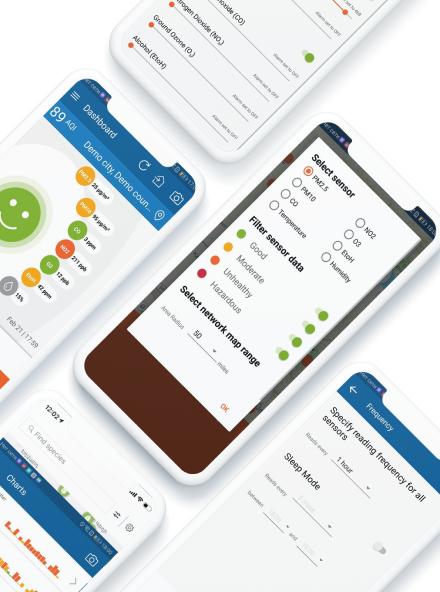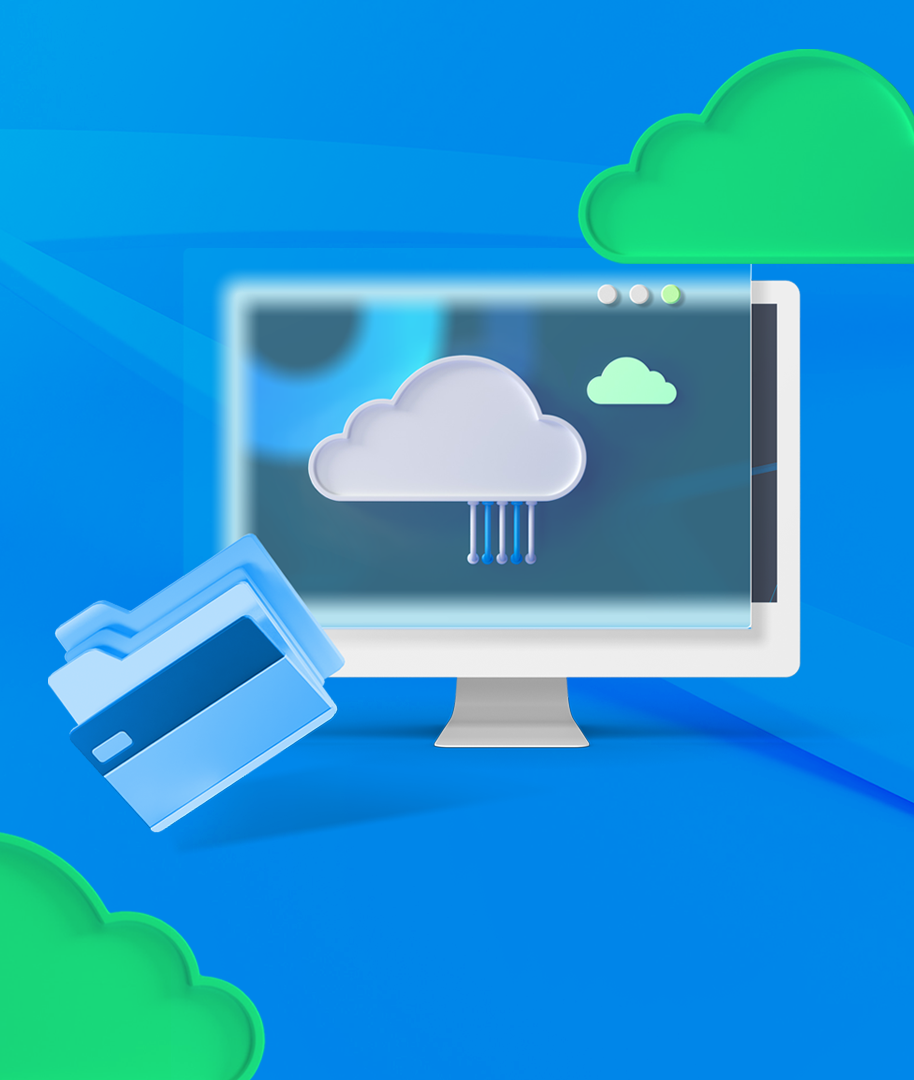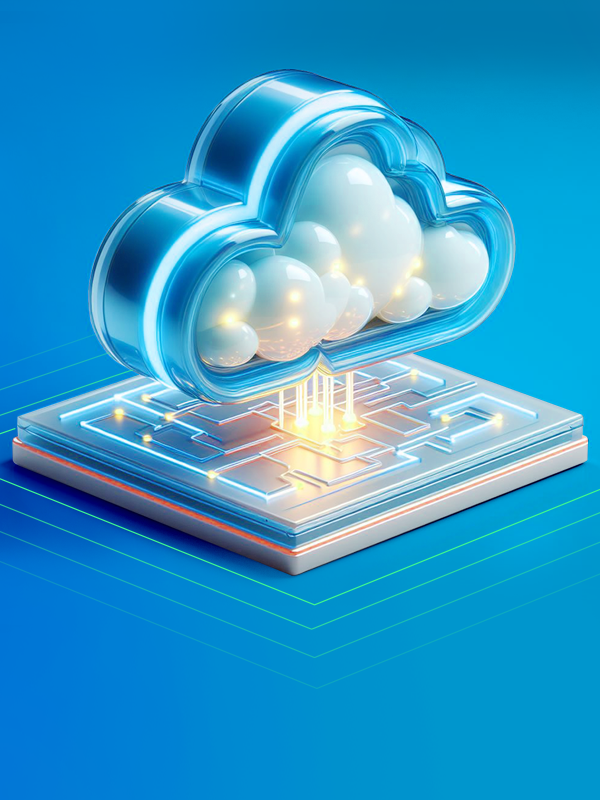
Flutter VS Native: What to Choose for Your Mobile App?
21 Dec 2024
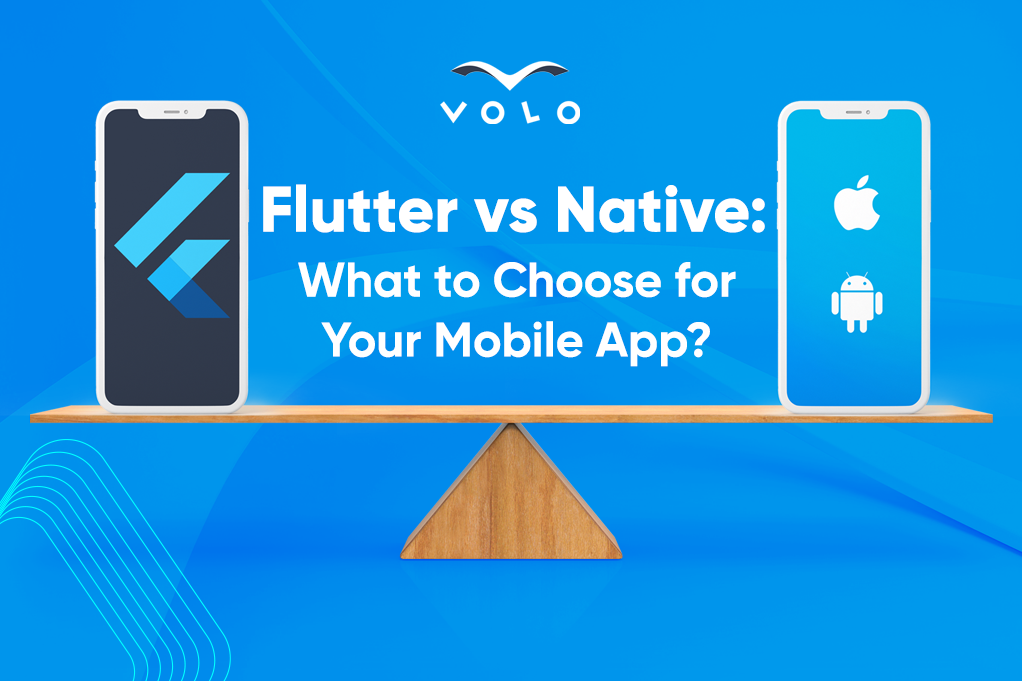
When it comes to mobile app development, business owners are faced with an embarrassment of riches. The tech world has a lot to offer and choosing the right technology for your future app can become quite an overwhelming process, especially if you are not too techie. If your selection has come down to Flutter or Native app development then we might have a thing or two to tell you about these two approaches.
Before we delve deeper into the matter, let’s first have a quick look at the main technologies that are used in mobile app development in general:
- Native Technologies: Being pretty much the forefather of mobile app development technologies, native app development tools are meant for building mobile apps for a single platform. For instance, using such programming languages as Java and Kotlin, you can develop a native app for Android. On the other hand, Swift and Objective-C are for building native iOS apps.
- Web-Based Technologies: The most popular web-based cross-platform technologies are Cordova and Ionic. Both are open-source frameworks that allow the use of JavaScript, HTML, and CSS. Web-based technologies are used for cross-platform app development but do not boast high flexibility and feasibility.
- Semi-Cross-Platform Technologies: As the name suggests, in case of semi-cross-platform technologies, there is a touch of native somewhere in there. You get a single codebase reflecting the logic of your mobile application for all platforms and a platform-specific UI which is developed with native tools.
- Cross-Platform Technologies: And here we have the cross-platform technologies which will provide you with a single codebase for all platforms while covering your app’s UI needs. The most widely-known cross-platform technologies are Flutter, React Native, and Xamarin.
Native App Development: Pros & Cons
Nowadays many in the tech world would argue that native apps have long conceded their place to cross-platform apps since the numbers of the latter keep growing rapidly. However, it doesn’t mean that native app development will soon be left out. Thanks to the numerous important features and advantages, native apps are definitely here to stay.
Pros
Here is a quick look at some of the main benefits that native app development brings to the table:
Mature Platforms
Both Android and iOS have been around for quite a while and have passed multiple stages of transformation and modernization reaching a certain point of maturity. This, in turn, means that native mobile frameworks have a rich history with a large amount of features that have undergone all the necessary updates to create powerful and responsive apps. It has to be mentioned that the constant improvements, changes, and updates are an ongoing process.
Modern Declarative UI Framework
Jetpack Compose and SwiftUI are the modern declarative UI frameworks offered by Android and iOS respectively. In simpler words, these are tools that make the implementation of updates much easier and faster in native apps.
High Performance
Since native development presupposes the building of apps specifically for a single platform, the overall performance is slightly better as compared to other technologies. Native apps offer a platform-specific UX/UI and high speed when it comes to loading and executing processes, and in general, fewer bugs.
Immediate Availability of Platform Library Updates and New Technologies
Native development ensures that all library updates and new technologies become available right away which speeds up the whole development process and highly contributes to the work of developers.
Easier to Work with Device Hardware
Since the code runs directly on top of the underlying operating system, native apps also get direct access to the given device’s hardware and equipment. Thanks to this, you can use the camera, GPS, and the microphone faster. The ease of working with device hardware is also the reason why games with complex 3D animation and graphics are better developed with native technologies as they use the native graphic features of the device. The same also goes for processor-heavy apps (e.g., video editing).
More 3rd-Party Libraries
This one is beneficial especially for developers. The more 3rd party libraries and SDKs, the better. With native technologies, this is a given. There is also huge community support for developers. It’s like a safe space where they will surely find the answers to any question that may arise during the development process.
Cons
The cons of native app development are not that many or intimidating:
Monitoring Two Separate Codebases
It can be a daunting task to keep an eye on two separate codebases. You and your team should be ready to invest more effort and resources in this than if your app were built using a single codebase.
Development and QA Costs
Native app development means you will need 2 different teams working on your project which is why the overall costs of your app development will be relatively higher than in case of cross-platform development.
Flutter Development: Pros and Cons
Flutter is VOLO’s technology of choice when it comes to cross-platform app development. In fact, it has become the go-to technology for a fast-growing number of people: business owners and software developers alike. The reason behind this is that Flutter, which is Google’s offspring, comes with a number of beneficial features and incomparable flexibility.
Pros
Let’s browse through the advantages of Flutter:
Single Codebase
With Flutter, your team writes a single code for all platforms thus highly shortening the overall development cycle. You can use Flutter’s single codebase for Android, iOS, web, desktop, and other platforms. Faster development means an earlier release into the market which is already a big privilege over your competitors.
Support of Multiple Platforms
Flutter provides support for multiple platforms which include Web, Windows, Linux, Mac OS, and the Mobile Platforms (iOS and Android). Mobile platform support is the most stable now, while the support of desktop and web platforms requires some time to become ready for production and develop all the necessary libraries.
Modern UI Approach (Declarative UI)
Thanks to the declarative approach, Flutter ensures a seamless integration between designers and coders. It highly eases the work of web developers by allowing them to only describe the current UI state while leaving the task of transition to the framework.
Use of Google’s Dart Programming Language
Flutter uses Google’s programming language Dart which has been highly customized and adapted to the “needs and demands” of the framework. Besides, Dart is also easy to use for developers. Its features are quite similar to those of static and dynamic languages, which make the learning of the language effortless.
Easy Integration into an Existing Native Project
You read it right. Flutter can be integrated into a native project, if need be.

A Highly Reduced Need for Development and QA Resources
Since you DON’T need two different teams and two different codebases to develop and maintain your app, you will also NOT need a big budget to start implementing your project with Flutter. It’s highly cost-effective and requires less maintenance than native apps.
Cons
Nothing is perfect is true for Flutter too. Let’s have a look at a couple of slightly disadvantageous features of the framework:
Harder to Work with Platform Hardware APIs
With Flutter, you may find it a little hard to work with hardware APIs, such as the camera, Bluetooth, location, etc. However, it’s not that bad because there is always an alternative solution to any such problem. You can use these APIs by wiring up the Flutter code to the appropriate platform APIs. This might require more maintenance which is still nothing compared to having to maintain and monitor 2 codebases.
Another solution to this is using a 3rd-party library. In fact, the main drawback of these two solutions is the slightly increased workload of developers. Other than that, Flutter makes sure to provide all the necessary tools to make working with platform hardware APIs possible.
A Bigger Final Archive Size as Compared to Native
Most users hardly pay attention to the size of the app they download unless their phone is running out of memory. This is another disadvantage of Flutter apps - their archive size is usually about 15-20 megabytes more than that of the native apps. The extra megabytes are added because of the extra engine code shipped with the app.
It’s worth mentioning that almost any cross-platform app comes with a larger size as compared to native apps, so this is not only the case with Flutter.
Security: Which is Safer?
In terms of security, both Flutter and Native technologies offer the highest standards. In case of Flutter, Google will always make sure that all security measures are in place and all necessary updates are regularly carried out.
However, we have to say that Native technologies might beat Flutter by one point in this matter. Let’s look at the details of this. When it comes to cryptographic or biometric authentication API security measures, Flutter relies on the security mechanism of the underlying OS and uses its native APIs which are released by platform channels - it’s like a bridge mechanism that brings the native APIs to Flutter. There are 2 factors to be mentioned at this point:
- You get an additional code layer which can come with security issues.
- And also getting the latest updates for Native APIs can be more tricky on Flutter than it is in case of Native.
In fact, the above described issue is not a direct security problem but it can lead to one.
Despite this, 90-95% of applications will hardly face a security issue, regardless of the technology they are built in - Flutter or Native.
So, how to make the right decision between Flutter and Native app development?
Both technologies can be the right choice for developing a mobile application. Your final decision should come down to the specifics of your app, your business needs and demands, your budget, and other relevant factors. If you are a newbie in the tech world, it’s best to discuss your project idea with a trustworthy tech partner before making a decision.
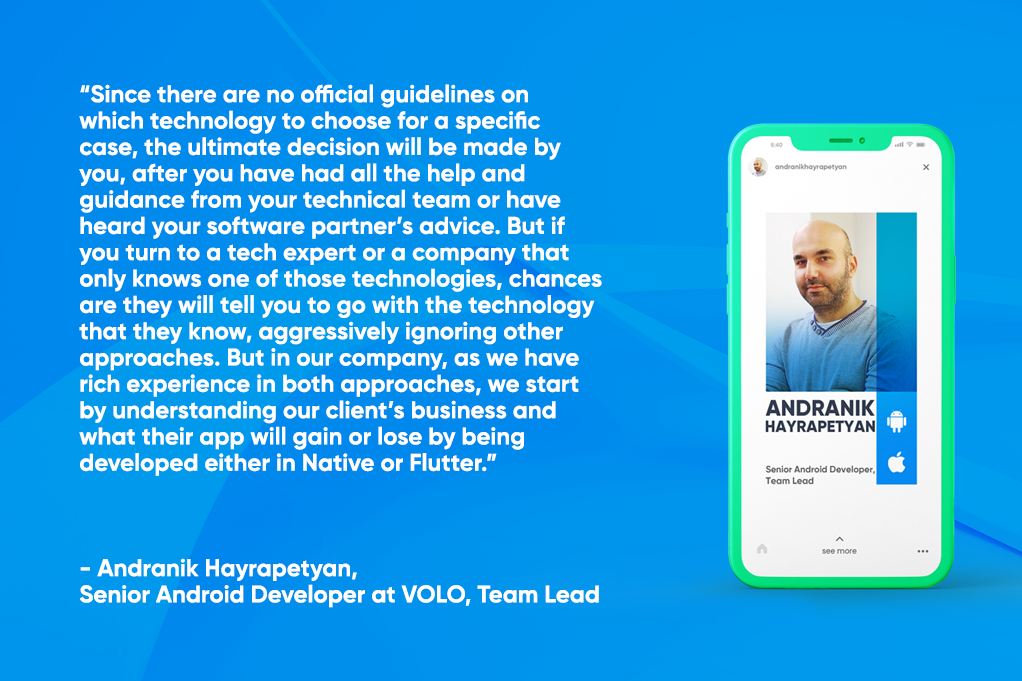
Parting Thoughts
Let’s wrap up this whole Flutter vs Native challenge and list some important points that will help you in the future if you find yourself facing this dilemma:
- Flutter beats native in development time by requiring just one codebase for all platforms.
- Flutter wins when it comes to UI tasks and business logic, while Native wins when it comes to hardware APIs.
- If your app has no platform-specific UI requirements or hardware dependencies, you can save up to 30-35% of your resources and time.
- Native offers a larger number of 3rd party libraries than Flutter. However, in case of 80-85% of applications, Flutter does come with the needed libraries.
- There is a bigger community of Native developers as compared to that of Flutter. But that’s because Native technologies have been around much longer. The number of Flutter developers is rapidly growing, not to mention the fact that lots of Native developers are switching to Flutter.
If you have any questions left or need help in choosing the right technology for the development of your project, our team will be happy to guide you through the whole process.

